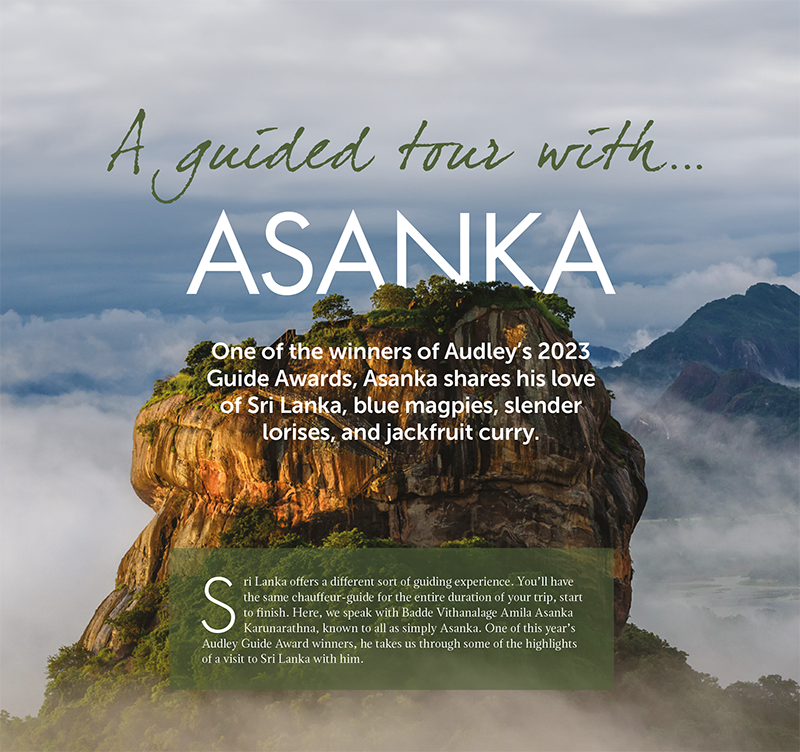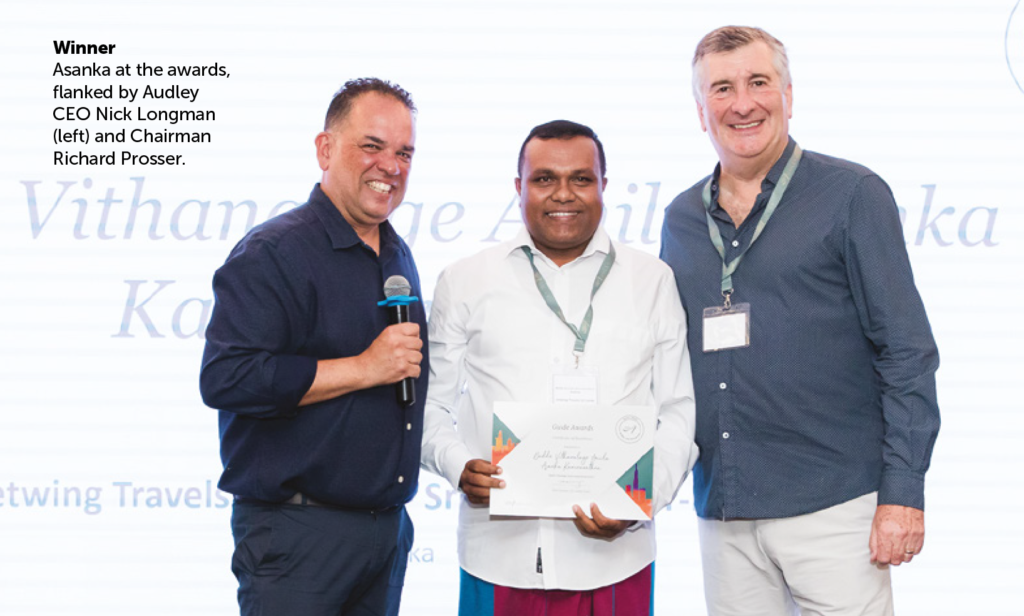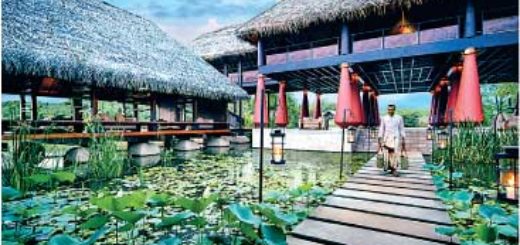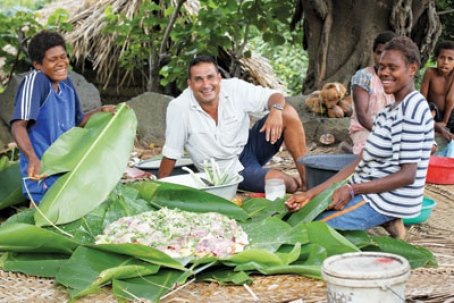A Guided Tour with Asanka
by Jetwing ·
When I was a child, about ten years old, I saw visitors come to Colombo where I lived with my

parents. I remember thinking ‘I want to be a guide.’ I’ve been a guide for 22 years now — this
is my dream.
For me, the chauffeur-guide experience starts at the airport. From the moment I pick you up, I start getting to know you, learning what you’re interested in, what you want to see, how you like to travel. Then, I can enhance your whole trip in lots of small ways.
For example, if you’re a photographer, I can make small detours to visit waterfalls and viewpoints along our route. If you’re thirsty, I might suggest
a stop at a coconut stand for a drink from a fresh nut. If you’re hungry or just want to
try something new, we could stop at a banana stand and I’ll help you choose — we have 29
varieties here, from tiny pink ones to a variety that tastes just like vanilla ice cream.
Also, every night before I leave you, we’ll discuss the timings for the next day. I admit that all Sri Lanka guides want to get started as early as possible — everything is just better first thing in the morning — but if you want to sleep in for a little bit, I can arrive later.
I can also recommend a local restaurant for dinner depending on what you’re looking for. If you’re in the mood for a local curry, there are plenty of small options wherever you go. I like polos ambula, baby jackfruit curry. Ripe jackfruit tastes like a cross between mango and pineapple, but the baby fruit is less sweet, with a texture something like pulled meat. I always suggest it to clients who have never had it before.
Cultural Triangle
Almost everyone travels around Sri Lanka in a clockwise circle, arriving to Colombo and heading north to the Cultural Triangle first. The star here is the Sigiriya Rock, the dramatic rock-carved fortress.
I always suggest getting up very early — as early as you can — to climb the rock. It’s a long and exposed walk to the top and you’ll be grateful for the early morning cool. Plus, there are far fewer visitors to distract you from the view, which is worth the climb.
Also in the Cultural Triangle are the Dambulla Cave Temples, the sight I think that reveals the most about Sri Lanka. The oldest images on the cave walls date back about 2,000 years and you can watch the evolution of sacred art as you walk through the five different caverns, like
walking back through the history of Buddhist philosophy. I’ve had clients so moved that they become quite emotional.
I particularly like to visit during Poya, the Buddhist lunar festival that occurs each month at the full moon. Watching the ritual of the celebration, with everyone in white clothes, is the best way to really experience Buddhism in Sri Lanka. The third point of the triangle is Anuradhapura, a sprawling complex of monasteries, hundreds of temples, and a sophisticated irrigation system. Its main trio of shrines — called dagobas — were once the second-largest buildings in the world, second only to the pyramids at Giza. For me, the best part of Anuradhapura is taking you to see the Sri Maha Bodhi. This sacred fig tree was taken as a cutting from the tree that Buddha was sitting under when he achieved enlightenment

Birds, elephants & more
As an island, Sri Lanka has a unique ecosystem and lately I’ve noticed that many of my clients
want more than just culture and history. They want to see wildlife when they visit. I’ve spent years learning more about the local animals, especially the 34 endemic species of birds.
It’s easy to spot something like a kehibella, or blue magpie.
They’re big birds with bright blue feathers, chestnut heads and wings, and vibrant red beaks, feet, and eyes. They’re so eye-catching that even clients who start out not interested always wind up asking me ‘What’s that bird?’ Most of them find themselves fascinated and at the end of a two-week trip, even a casual birdwatcher might see as many as 30 different species.
If you’re exploring the Cultural Triangle, you can include a safari to one of the nearby national parks. Which park you visit is usually dependent on the conditions. So I’ll choose the best one
depending on what you want to see and where the animals have been sighted.
At the park, we’ll switch from my air-conditioned car into a park-owned 4×4 driven
by a ranger who acts as our tracker. You might see sambar deer, sea eagles, crocodiles, and
elephants. Of course, everyone wants to see a leopard or sloth bear, but they are very rare.
The mammal I like best is the slender loris. They’re small, fast, and nocturnal, so seeing one can
be difficult, but if clients share my fascination, I’m always eager to take an evening stroll to see if
we can spot one. I find it’s often these lesser-known animals, and sights, and food that my clients find most memorable during their trip.




